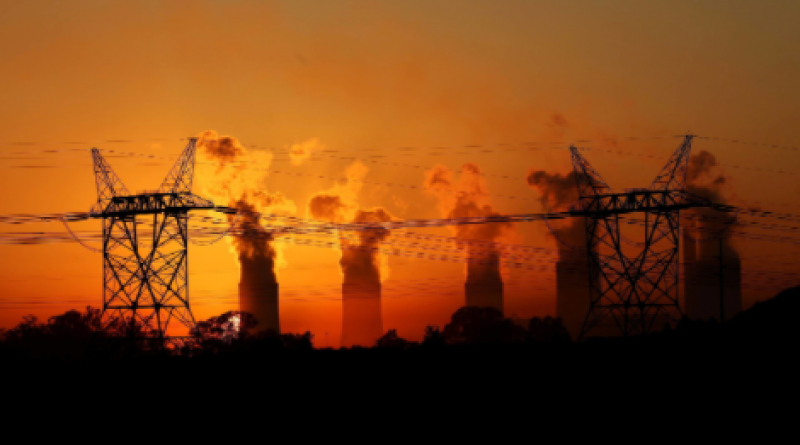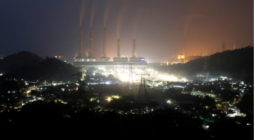India: Energy crisis shows coal is an expensive and unreliable source of electricity generation

Any knee-jerk reaction that urges more investment in coal completely misses the point
India is teetering on the brink of joining a growing global energy crisis. This burning issue is not only keeping coal power producers, distribution companies, and state governments awake at night, but also the Prime Minister’s Office, the Ministry of Power and the Ministry of Coal. Daily analysis of coal stocks is taking place at the highest levels to avert the risk of blackouts.
So how did we end up in this situation? And what can we learn from it?
Understanding the causes
Electricity demand in India has soared on the back of recent strong economic growth. But peak demand during September and October is around 175 gigawatts (GW), less than it was in July when demand crossed 200GW. In July, however, there was enough coal-powered production as well as generation available from wind and hydro to meet the peak demand. The real demand surges happened before the current crisis with much higher demand from late June to mid-July, and again during August.
While electricity demand was expected to surge with the economic revival, it is less the demand level than the lack of preparedness at the supply side that is driving the current power plant coal and electricity shortage.
At the end of financial year (FY) 2020/21, coal stocks hit a record high of 132 million tonnes (MT) – Coal India Ltd. (CIL) and Singareni Collieries Company Limited (SCCL) had the highest pithead coal stockpiles. Comparing the coal stock positions for the first seven months (January to July period) over the last four years, total coal consumption increased by 21% in 2021 compared to 2020, by 7% over 2019 and by 11% over 2018.
CIL was sitting on much larger coal stockpiles than usual – over 40 MT – even at the end of September, so how has the situation become so precarious? Monsoons impact CIL production every year, but this year was different – India witnessed an extended monsoon season which exacerbated the coal shortage crisis. Further, issues with transportation logistics during this season led to lower offtake of coal.
But despite all these issues, CIL still had enough supplies to meet coal demand. On 9 October the total despatch of coal from all sources, including CIL’s and SCCL’s production, captive mines, and imports, was 1.92 MT against the total consumption of 1.87MT. The coal despatch was further increased to 2 MT on 12 October.
Although there is enough coal at CIL’s end, despatch to coal power plants has become an issue. CIL has been regulating supplies to coal power producers on account of discom payment delays, which means that the situation is worse in states where coal power producers have large outstanding dues.
Analysis of the daily coal stock position reveals a deterioration as more plants reported their supplies were reaching critical levels. On 1 August, 23 plants with installed capacity of 33GW had critical coal supplies. By 9 September, this increased to 92 (with total installed capacity of 112GW) and by 22 September, it was 102 (123GW). On 10 October 2021, the amount of capacity with critical coal supplies had reached 140GW.
A key problem was that power producers did not stock enough coal before the monsoons when coal stock supplies and dispatchability from CIL were not an issue. There was an expectation that another Covid wave would hit India during the festive season in October and supress demand. So power producers were ‘playing safe’ – at least financially – by not maintaining the mandatory coal stock supplies at their end, and this is a key cause of the current supply crisis.
Moreover, with the increase in price of imported Indonesian coal – from US$60/tonne in March 2021 to US$200/tonne in September/October for 5,000 Kcal/kg GAR (Gross As Received) coal – the shortfall could not be viably met through coal imports. Given the skyrocketing prices of imported coal, power producers have been reluctant to increase coal imports, and incur the resulting losses.
Although daily wind generation fell from a high of 510 MUs in August 2021 to 100-150 MUs in September-October, this is a normal seasonal event, and since 1 September, wind has generated far more (between 23% and 41%) than in the equivalent period in each of the last three years, and hydro slightly more, so they cannot be blamed for the energy shortfall. Meanwhile solar has steadily and predictably increased its contribution to the grid.
Finding solutions
While the current energy crisis has prompted alarm, the government has sprung into action and with monsoons receding, domestic coal production and coal offtake have been ramped up. To deal with the crisis, the government has suggested blending 10% of imported coal with domestic coal which would soften the high prices. The government has also asked power plants with captive mines to ensure these mines are used to the maximum. The captive mines have been allowed to sell 50% of their annual output in the open market. Plants with imported coal power purchase agreements (PPAs) have been asked to redirect coal to generators with low stocks.
With these efforts, it is likely, at least in the short term, that a blackout situation will be averted. Looking ahead, there is growing recognition that coal is a ‘zombie fuel’ – the walking dead – and we should be progressively reducing our reliance on it by building clean, cheaper domestic alternatives at increased speed.
Any knee-jerk reaction that urges more investment in coal completely misses the point. The cost of coal-based generation is high and, further, it is inflationary. The current crisis has also revealed that coal is an unreliable source of electricity generation that is heavily dependent on a long supply chain and would be better used as flexible generation as the share of variable renewable energy increases.
India must now accelerate the deployment of deflationary renewable energy. To ensure a secure, reliable and low-emissions electricity system, we urgently need flexible and dynamic generation solutions in the form of battery storage, pumped hydro storage, peaking gas-fired capacity and flexible operation of the existing coal fleet.
By Vibhuti Garg, Energy Economist and Lead India at the Institute for Energy Economics and Financial Analysis (IEEFA)
This commentary first appeared in The Economic Times
18 October 2021
IEEFA




